I started out wanting to compile a list of Spain's top 5 most magical places but I have to be honest it was impossible to narrow it down to 5 and even harder to order them. So I gave up and decided to create a shortlist as follows. It is not in any particular order. Feel free to leave a comment on any place in the list you have visited or any place you think should have been included!
1. Natural Park of Forest Corona (Tenerife)
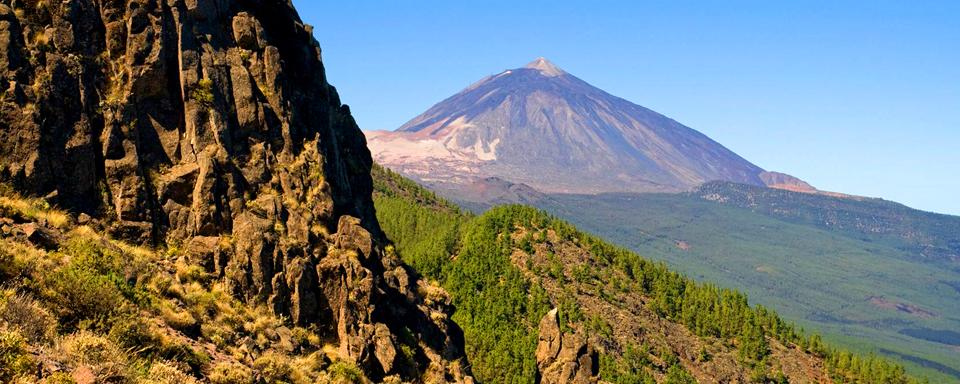
This predominantly forested area encircles the Teide National Park and is home to some of the best examples of pine and high-altitude vegetation on Tenerife. The heads of a large number of the ravines that form the drainage system of the north and south of Tenerife are located here, meaning that the area plays a vitally important role in capturing water and protecting the land against erosion.
The area boasts a host of geomorphic features, the most impressive being the immense La Orotava and Güímar valleys. Other fascinating and unique geographical structures include the lunar landscape above the town of Vilaflor and Cuevas Negras to the north of Pico Viejo.
A number of threatened species can be found in the high biodiversity of native flora and fauna of the area, as well as many other species protected by national laws and international agreements. It is a magnificent sanctuary for pine forest birds, of which there are a number of native species. Many of the geomorphic features (ravines, vents, recent lava flows, etc.) are representative of the geology of the island. The area is of exceptional beauty and value.
2. Ordesa National Park (Huesca)
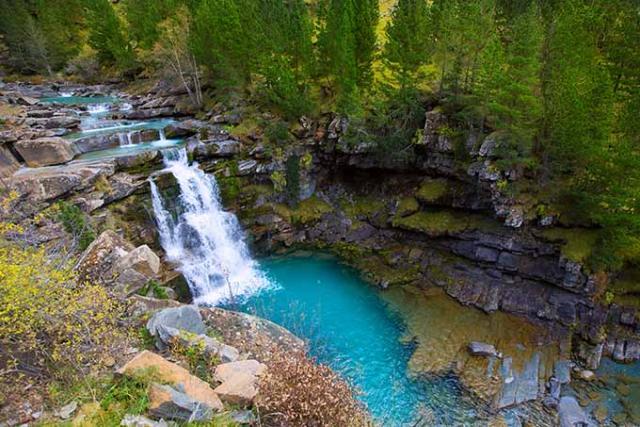
The National Park is part of the Pyrenees and Monte Perdido National Park which was declared a World Heritage site in 1997 by the UNESCO. Since 1977, a part of the park has also been inside the Ordesa-Viñamala Biosphere Reserve.
It is an incredibly beautiful place with a landscape of towering summits. It has a wide variety of ecosystems with both an Atlantic and Mediterranean influence, which is what gives it such a rich and diverse flora and fauna. The scenery is dominated by the great massif of Monte Perdido (3,355 m), with the peaks of the Tres Sorores branching out into the valleys of Ordesa, Pineta, Añisclo and Escuaín.
3. The Alhambra (Granada)
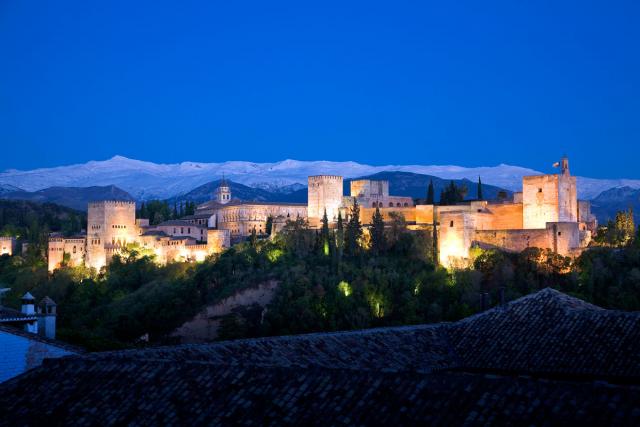
The Alhambra was originally constructed as a small fortress in 889 and then largely ignored until its ruins were renovated and rebuilt in the mid-13th century by the Moorish emir Mohammed ben Al-Ahmar of the Emirate of Granada, who built its current palace and walls. It was converted into a royal palace in 1333 by Yusuf I, Sultan of Granada. Alhambra's Islamic palaces, as we know them today, were built for the last Muslim emirs in Spain and the court of the Nasrid dynasty. After the conquest of Granada by the Reyes Católicos ("Catholic Monarchs") in 1492, some portions were used by Christian rulers
4. Pyramids of Güímar (Tenerife)
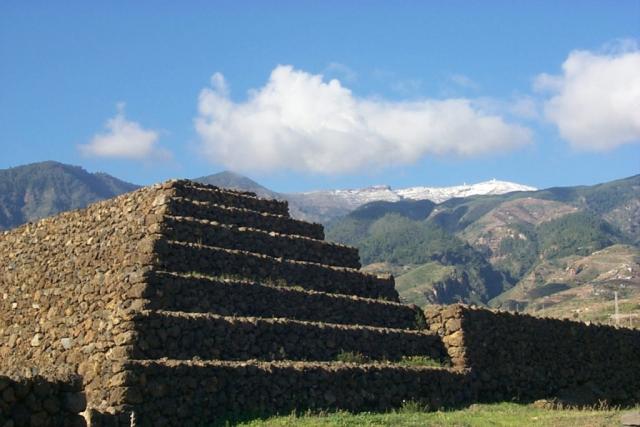
The Pyramids of Güímar refer to six rectangular pyramid-shaped, terraced structures, built from lava stone without the use of mortar. They are located in the district of Chacona, part of the town of Güímar on the island of Tenerife in the Canary Islands, Spain. The structures have been dated to the 19th century AD and their original function may well be explained as a byproduct of contemporary agricultural techniques.
Other pyramids employing the same methods and materials of construction can be found in various sites on Tenerife. In Güímar itself there were nine pyramids, only six of which survive.
5. Médulas (Leon)
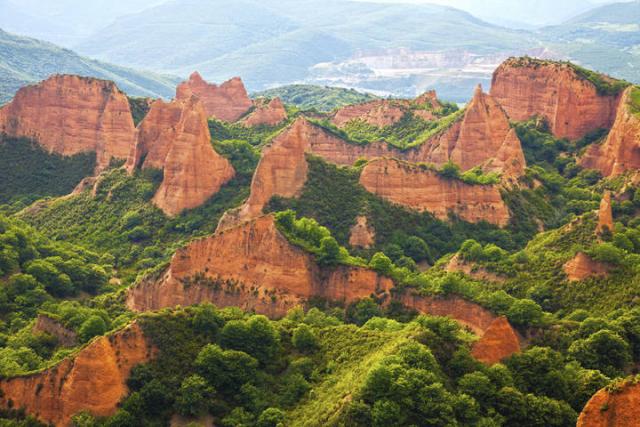
The town of Las Médulas is located in the region of El Bierzo, Leon. This small mountain town marks the natural beginning of the ascent towards Las Médulas, a unique cultural landscape that was declared a World Heritage by UNESCO.
The serrated relieve of this landscape, marked by red clayey mountains and covered by chestnut trees, owes its appearance to the Romans, who altered the natural environment in this area when they established a gold mine in the 1st century AD.
For this purpose they came up with an ingenious system called "ruina montium", which used water force to crumble down the soil and expose the gold.
The two centuries that this type of mining went on, caused the formation of the peculiar relieve of Las Médulas. Red-clay erosion gullies, towers, and underground galleries, all surrounded by chestnut trees, make up this cultural landscape. Peaks higher than 100 metres lead to the centre of the gold mine, the Cueva Encantada (Enchanted Cave) and Cuevona (the Huge Cave).
Eight kilometres away from Las Médulas, the viewpoint of Orellán offers one of the best views of the whole place.
6. Ucanca Valley, Teide National Park (Tenerife)
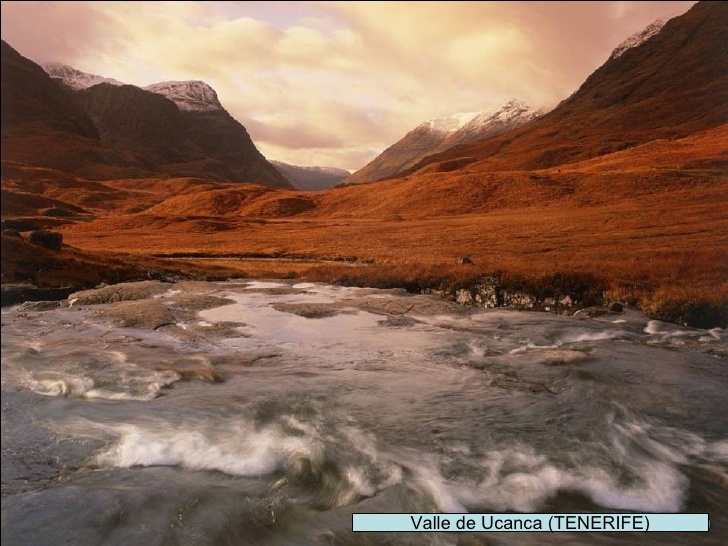
The natural boundaries of Teide National Park are marked by a grandiose, spectacular caldera. The Teide-Pico Viejo stratovolcano formed inside this elliptical depression, which measures 16 x 11 km.
The name Las Cañadas comes from the plains at the foot of the caldera escarpment, which were used as a cattle route (known as "cañada" in Spanish). The biggest plain is called Llano de Ucanca. The water that descends the walls is trapped inside, and so the elements that are dragged along with it settle and accumulate in the base, forming these plains.
The origin of Las Cañadas caldera is a topic of debate, and there are two main hypotheses. The most likely theory is that it has been formed purely by erosion, with a valley that exits on the north face, in the municipality of Icod, which would now appear to be occupied by Teide lava flows. The other hypothesis is that there was a major collapse when a shallow magma chamber spewed out its contents at great speed.
7. Gaztelugatxe (Basque Country)
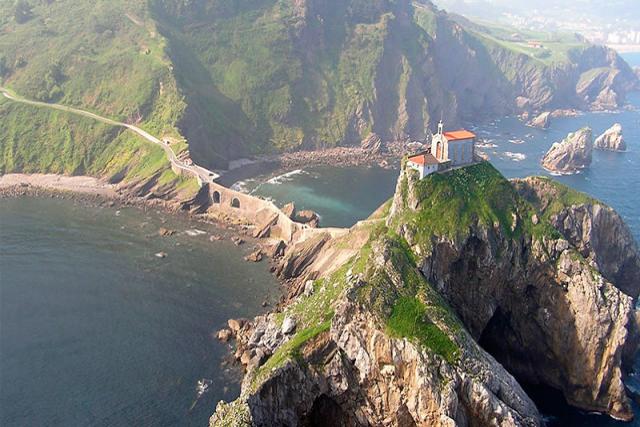
Gaztelugatxe is an islet on the coast of Biscay belonging to the municipality of Bermeo, Basque Country (Spain). It is connected to the mainland by a man-made bridge. On top of the island stands a hermitage (named Gaztelugatxeko Doniene in Basque; San Juan de Gaztelugatxe in Spanish), dedicated to John the Baptist, that dates from the 10th century, although discoveries indicate that the date might be the 9th century. With another small neighboring island, Aketze, they form a protected biotope that extends from the town of Bakio until Cape Matxitxako, on the Bay of Biscay.
8. Irati (Navarra)
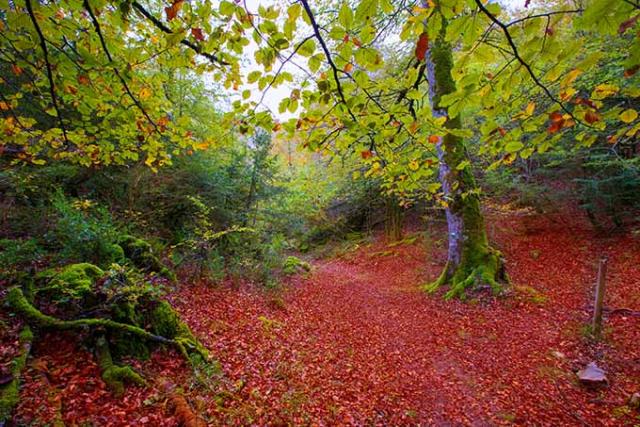
The Irati Forest is the second largest and best preserved beech and fir forest in Europe, an immense green mantle of some 17,000 hectares that is still in an almost unspoiled state. Standing among the western Pyrenees of Navarre, the Irati Forest is accessed from the picturesque villages of Ochagavía and Orbaitzeta and is a natural treasure in which you can find the protected areas of Mendilatz and Tristuibartea and the Lizardoia Integral Reserve.
Sit down in the heart of the forest and enjoy communing with nature; let yourself be enveloped in a silence broken only by the wild rushing of water between beeches and firs. Admire the crystalline currents of the river Irati that turn turquoise in the Irabia reservoir and listen out for the elusive sounds of the fauna and stroll across the soft blanket of grass that covers the Irati Forest. The scent of the woods will impregnate itself in your skin.
9. Mosque and Roman bridge in Cordoba
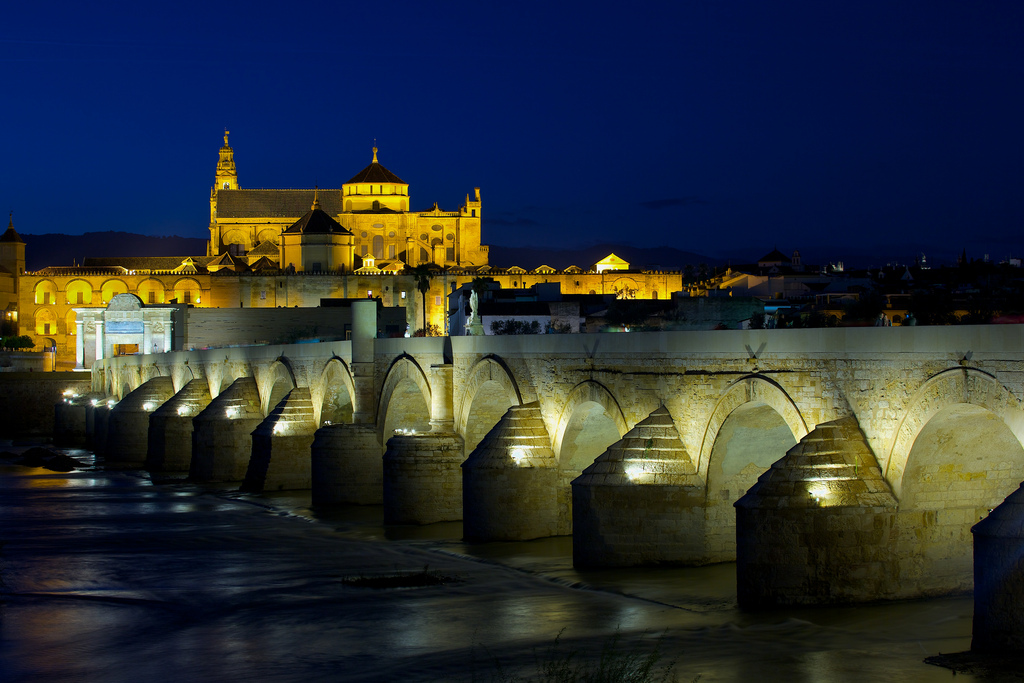
The view over the Mosque-Cathedral, with the river, the Gate of the Bridge and the Roman Bridge of Cordoba itself, is one of the most wonderful sights of Cordoba, especially at dusk, when the last rays of the sun linger on and make the stone surfaces glow a deep golden red. The bridge was first built in the 1st century A.D., but has been rebuilt many times since then, and in its present form dates mainly from the Medieval period, with the latest changes being made in 1876. There are sixteen arches, four of which are pointed and the rest semi-circular. Halfway along the railing on one side is a 16th century statue of San Rafael by Bernabé Gómez del Río.
The Mosque-Cathedral of Cordoba (World Heritage Site since 1984) is arguably the most significant monument in the whole of the western Muslim World and one of the most amazing buildings in the world in its own right. The complete evolution of the Omeyan style in Spain can be seen in its different sections, as well as the Gothic, Renaissance and Baroque styles of the Christian part.
10. Source of the Urederra, Urbasa Andía Natural Park (Navarre)
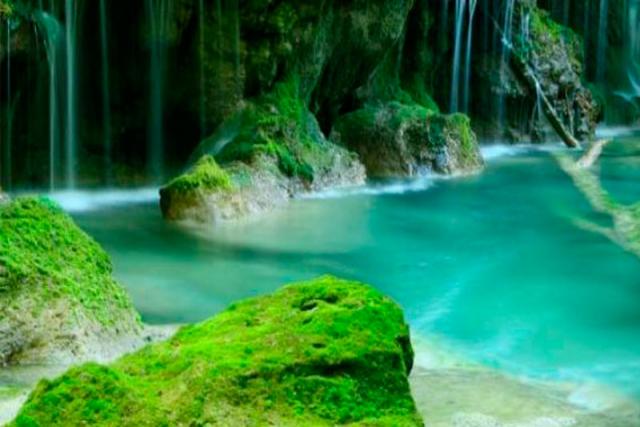
The burbling of crystalline water, the light filtering among the leaves of the trees, bathing the landscape in a lime green light and the aroma of nature has made this place, listed as a nature reserve since 1987, one of Navarre's most spectacular enclaves.
The Source of the Urederra is located north of Estella-Lizarra. It is the natural outlet of the aquifer lying under the karstic massif of Urbasa. Its first emergence takes place at an altitude of 700 metres, on the southern edge of the plateau, with an impressive 100 metre fall that, over millions of years, has modelled a rocky amphitheatre of breathtaking beauty.
11. The Walls of Avila
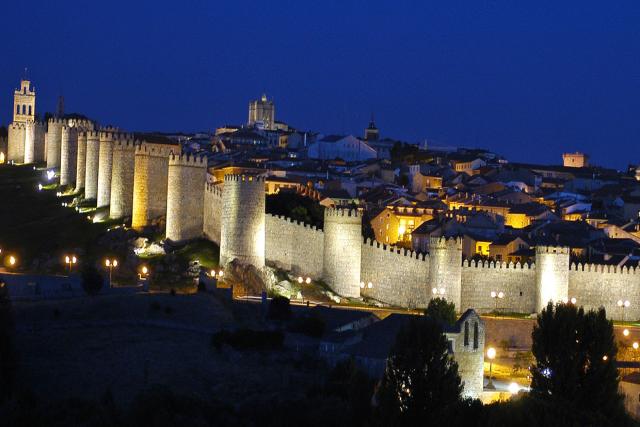
The work was started in 1090 but most of the walls appear to have been rebuilt in the 12th century. The enclosed area is an irregular rectangle of 31 hectares with a perimeter of some 2,516 meters,including 88 semicircular towers. The walls have an average breadth of 3 metres and an average height of 12 metres. The nine gates were completed over several different periods. The Puerta de San Vicente (Gate of St Vincent) and Puerta del Alcazar (Gate of the Fortress) are flanked by twin towers, 20 metres high, linked by a semicircular arch. The apse of the cathedral also forms one of the towers. The fortifications are the most complete in Spain.
12. Bardenas (Navarra)
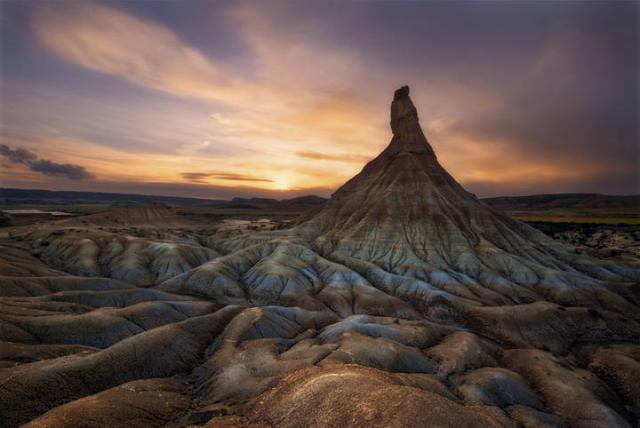
The Bardenas Reales is a semi-desert natural region, or badlands, of some 42,000 hectares (100,000 acres) in southeast Navarre (Spain). The soils are made up of clay, chalk and sandstone and have been eroded by water and wind creating surprising shapes, canyons, plateaus, tabular structures and isolated hills, called cabezos. Bardenas lacks urban areas, vegetation is scarce and the many streams that cross the territory have a markedly seasonal flow, staying dry most of the year. This Natural Park of wild beauty was declared a Biosphere Reserve by UNESCO.
13. Ronda (Málaga)
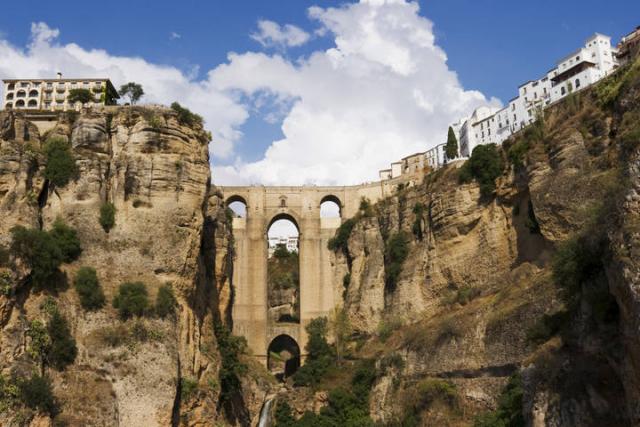
Despite being Andalucía's fastest-growing town - it overtook Córdoba in the big three Andaluz tourist attractions, behind Sevilla and Granada, in the early 21st century - Ronda retains much of its historic charm, particularly its old town. It is famous worldwide for its dramatic escarpments and views, and for the deep El Tajo gorge that carries the rio Guadalevín through its centre. Visitors make a beeline for the 18th century Puente Nuevo 'new' bridge, which straddles the 100m chasm below, for its unparalleled views out over the Serranía de Ronda mountains.
14. Gulpiyuri Beach (Asturias)
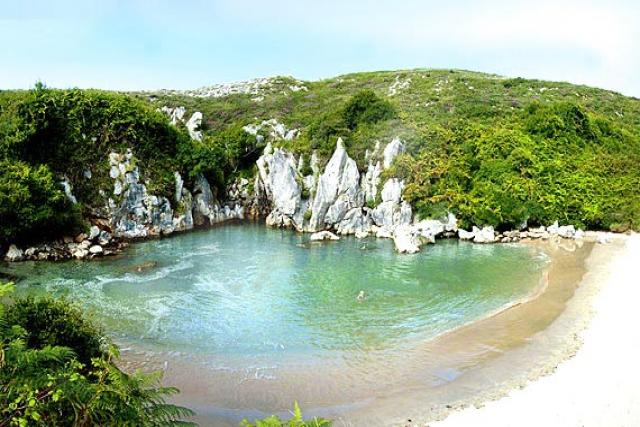
This is probably the most surprising part of the Asturian coast, declared a natural monument. Shaped as a half circle separated from the sea by the shelvings, it is a place where one can bathe without seeing the sea. Although sometimes referred to as the ‘world’s smallest beach,’ Playa de Gulpiyuri is definitely one of the world’s strangest.
15. Albarracín (Aragon)
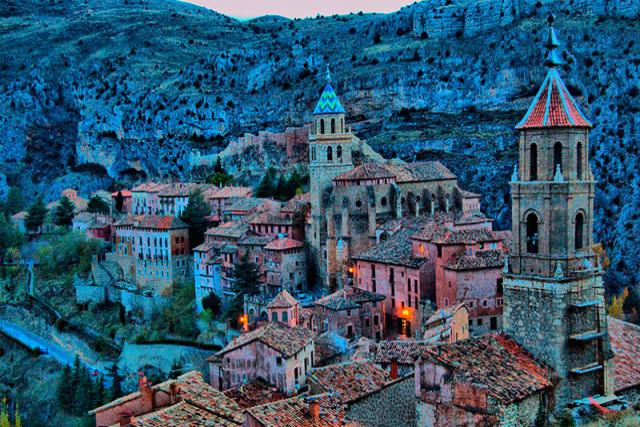
This sleepy little tourist village lies 3,878 feet above sea level, and is unspoilt by modernization. Driving towards the village perched high on the mountaintop evokes a sense of wonder. The Spanish newspaper, ABC.es, had a poll and Albarracín is considered to be one of the most beautiful villages in Spain.